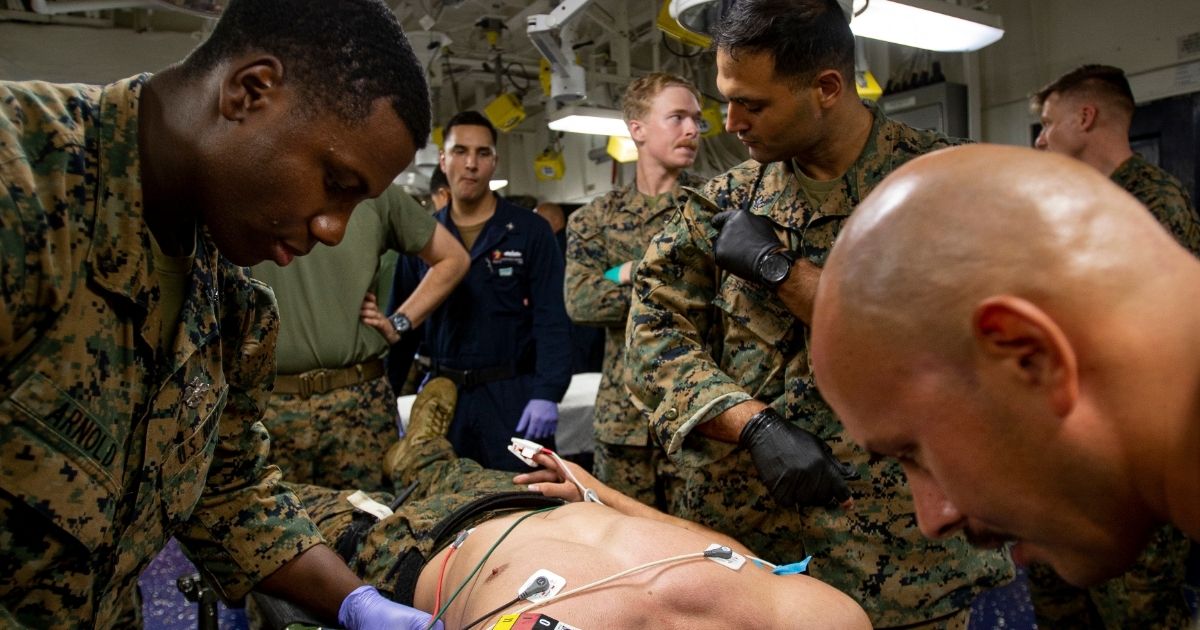The United States of America is famously always war-ready. A major portion of the country’s budget is dedicated to its military and equipment, and recruitment is always ongoing.
The US military also has bases all over the world and is ready with big, powerful guns—or is it?
A big part of a war is not only the weaponry but men and women fighting in that war. Their lives are equally important. If an army needs a gunman, it also needs military doctors. However, US military doctors are just not ready.
Ret. Maj. Gen. Paul Friedrichs, Ret. Lt. Gen. Douglas Robb, and Col. Jeremy Cannon were in front of the Donald Trump‘s Congress on Tuesday, 11th March, requesting funding for medical facilities. These medical facilities are required to train military doctors for severe traumas.
US military doctors aren’t ready for the next war, retired Air Force trauma surgeon tells Congress https://t.co/L18VwTSaHy
— Business Insider (@BusinessInsider) March 12, 2025
Col Cannon is a former Air Force surgeon who cautioned Congress on Tuesday that the US military’s surgeons aren’t gaining nearly enough expertise with trauma patients to be prepared for a major conflict.
He also said that the military is actively falling into the trap of the peacetime effect. This was during a Senate Armed Services Committee hearing on the condition of military healthcare.
Cannon is a trauma surgeon and was deployed to Iraq and Afghanistan. He spoke about medical readiness’s “systematic erosion” as US opponents become more formidable.
Only about 10% of military general surgeons experience the patient volume and level of acute cases necessary to remain designated “combat ready.” https://t.co/ZbiK5tXdH0
— Navy Times (@NavyTimes) March 11, 2025
He and others at the hearing frequently cited a study conducted by military academics. Studies at Harvard, Rutgers, and Deloitte revealed that, in 2019, only 10% of military doctors were prepared for battle, compared to 17% in 2015.
Cannon again and again emphasized the importance of good trauma doctors in the field. He said out of every four casualties, one could be potentially saved if there were good doctors present. This depletion of resources could cost the military life of its soldiers.
He also added that, according to projections, a peer battle may result in up to 1,000 casualties every day. This is the minimum number estimated for at least 100 days in a row. This kind of casualty has not been seen since World War II.
He gave examples of the Afghanistan and Iraq wars, where a proper trauma theatre took 10 years to build. Both with human and nonhuman resources. He added that the next conflict may not give the US military 10 years to prepare.
Cannon called on the United States Congress to establish five or six trauma centers for serious patients. These centers would have military physicians working there, who would be regularly exposed to treating such injuries. He also suggested having more civilian and troop cases directed to those facilities.
Medical advancements during WWII increased the survival rate for the wounded from 4% in WWI to 50%. Today, with modern military medical systems, only 10% of US military surgeons are combat ready. Any future conflict will truly be horrifying. pic.twitter.com/44fRLlVIvc
— Cyber🇺🇸 (@Cybercel2) March 12, 2025
Right now, trauma cases are dispersed all over the country. There is no dedicated place for surgeons to learn and practice. Doctors usually hop all over the country to these different centers to gain much-needed experience. That is still not enough.
Similar worries were voiced by the two other witnesses at the hearing, Ret. Maj. Gen. Paul Friedrichs and Ret. Lt. Gen. Douglas Robb.
The US government should view money for casualty care as an investment for future battles. According to all three witnesses, it should not be considered a burdensome expense.






